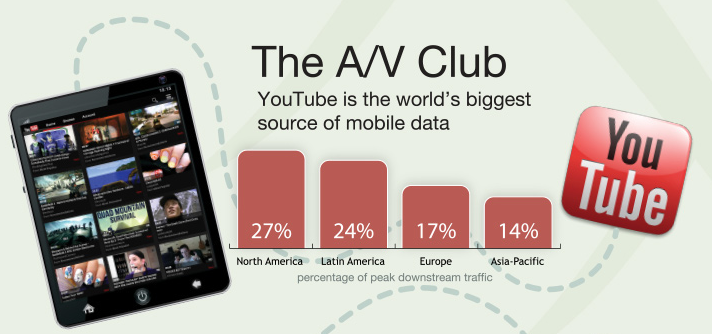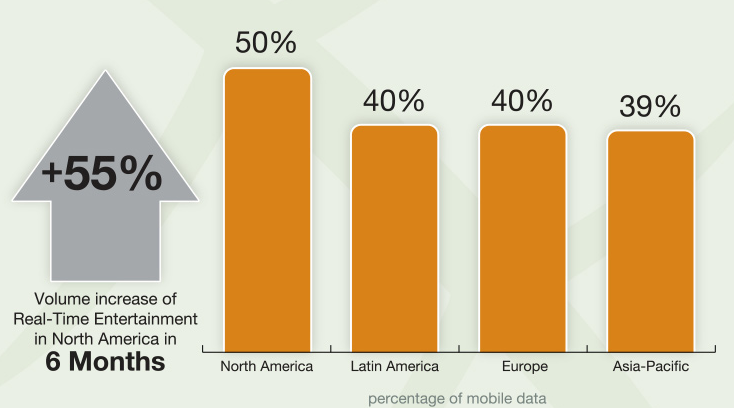YouTube is the largest source of mobile video traffic, according to a new report from Sandvine, and now accounts for as much as 25% of network data, and no less than 12% at any given time. The report examined traffic across a selection of Sandvine’s 200+ customers in North America, Europe, the Middle East, Africa, the Caribbean, Latin America, and the Asia-Pacific.
Combined with other services like Pandora and Netflix, audio and video streaming make up more than half of mobile data traffic in North America, and it’s on track to reach 60% by 2014, the company says.
Other regions aren’t far behind. In Latin America, for example, “real-time entertainment” (streaming audio/video, that is) accounts for 40% of network data. In Europe, it’s 40% and in the Asia-Pacific region, it’s at 39%. In those same regions, it’s YouTube that’s eating up most of the data, at 27%, 24%, 17% and 14% of peak downstream traffic, respectively.
What’s maybe more telling than these usage numbers, is the growth. In North America, real-time entertainment, as noted above, is 50% of downstream mobile data traffic today. That’s up from 34% just 6 months ago. YouTube is 27% of that figure, Netflix is 2%, and Pandora is around 6%.
Behind audio and video, browsing the web and social networking services are the only other two categories of usage that account for a significant amount of mobile data. In North America, web surfing is accounts for 21% of mobile data usage, social networking accounts for 10%, and everything else combined reaches 19%.
Although unrelated to streaming data figures, the new report also looked into the popularity of messaging applications like WhatsApp, to determine how they’re impacting mobile operators. In one example, on an Asian mobile network of 1 million users, WhatsApp accounted for 7.6 million messages sent per day, and with 7% of subscribers per hour sending an average of 12 messages per hour. In other words, a lot of SMS revenue lost for the operator in question.
Although YouTube and other audio and video traffic is leading mobile data usage now, Sandvine says that the continuous cloud/client connection will lead to other increases in data in the future, specifically for things like smartphone photo back-up and synchronization.



